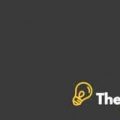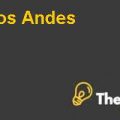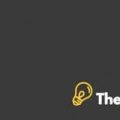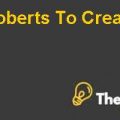
1. Internal Analysis
· Summary: The Company’s prices and costs competitive - financials analysis
a) Revenues:
From exhibit 1 given in the case, financial data has been given from 1983 to 2000. Firstly, revenues have been given for eighteen years that show fees that have been earned from different business units of Walt Disney Company. It can be seen that theme parks and resorts have contributed large amount of revenues to the company over the period of eighteen years. In 1983, revenues generated from theme parks and resorts accounts for 79% of the total revenues. The trend has increased for two years and then decreased for the other two years. However, the percentage contribution from this business unit has decreased and reached 27% in 2000.
By the end of 2000, business unit that has contributed the most in the company’s revenues are media networks contribution that is 38% of the total revenues. In addition to that, lowest contribution business unit in 2000 was internet and direct mailing that contributed only 1% to the business unit. Furthermore, revenues from studio entertainment were initially 13% of the total contribution but later, the contribution has increased over the period of 18 years and finally reached 24% of the total revenues. Moreover, the consumer products business units accounted for 8% in 1983 and reached 10% by the end of 2000. Internet and direct marketing contribution accounts for 0% in total revenues; thus, the company is not earning any revenues from it.
b) Operating Income:
Operating income can be defined as the profit that is available to the business owners before the payment of few other items. Again, theme parks and resorts have the highest contribution in the company’s overall operating income i.e. 88.8%. The trend was on the decreasing side and reached 39.7% in 2000. In addition to that, contribution to operating income by studio entertainment was negative in 1983 but later increased and reached 2.7% in 2000. Consumer products contribution in total operating income accounts for 26.6% and follows the same trend and decrease to 11.1% in 2000. On the other hand, media networks and internet & direct marketing contributes for 0% from 1983 to 1995 but then media networks contributed to 56.3% of the total operating income.
c) Net income and total assets:
Despite fluctuating revenues and operating profits, net income of the company was increasing and reached $920 million in 2002. With an increase in net income, total assets of the company were also increasing and reached $45,017 million in 2000.
d) Ratios (operating margin, ROA and ROE):
Operating margin of the company can be defined as the profit that is earned after reducing all the cost but not the tax related deductions. Operating margin ratio of Disney in 1983 was 14%, which increased to 25% in 1987 but later it declined and reached to 13% in 2000. Same trend has been followed by return on assets and return on equity. ROA of the company was 4% in 1983 and then increased to 12% in 1987 and then attained an ROA of 2%. Moreover, ROE of the company was 7% in 1983 and increased to 26% in 1987. Then, eventually it reached to 4% that was showing that the company was earning returns of 4% from the equity (Caroselli, 2004).
e) Amusement park attendance:
Exhibit 4 in the case study has explained top 30 amusement parks worldwide attendance in millions. Data has shown that in 1983 and 1991, the attendance was highest in Magic Kingdom Walt Disney World, Florida. In 1999, there were 17.5 million attendances in Tokyo Disneyland. In addition, CAGR has been given as well from 1983 to 1983 that was highest for Tokyo Disneyland. From 1991 to 1999, CAGR was highest in Lotte World, South Korea i.e. 3.9 million (Griffin, 2000).
f) Top grossing animated films:
The highest inflation-adjusted box office revenues in 2000 were from the Snow White that was $572 million. From United States, the largest number of revenues came from the movie Lion King that was $313 million. Disney has highest market share in the entertainment industry as compared to its competitors that own 23% of the market share (please refer exhibit 7 from the case). Along with that, total box office revenues of Walt Disney were $1,263 million. The closest competitor in terms of box office revenues was Warner that accounts for $1,061 million revenues (refer exhibit 8).
· The current strategy: 3 Tests of strategy
The three strategy tests that can be applied in this case are the test of inimitability, the test of appropriateness and the test of competitive superiority. Each of these tests are applied to the case individually with an assessment of the resources that Walt Disney holds at present so as to signify the position of Walt Disney in the market place, and also to analyze the sustainability of these resources in the long run.......................................
This is just a sample partial case solution. Please place the order on the website to order your own originally done case solution.












